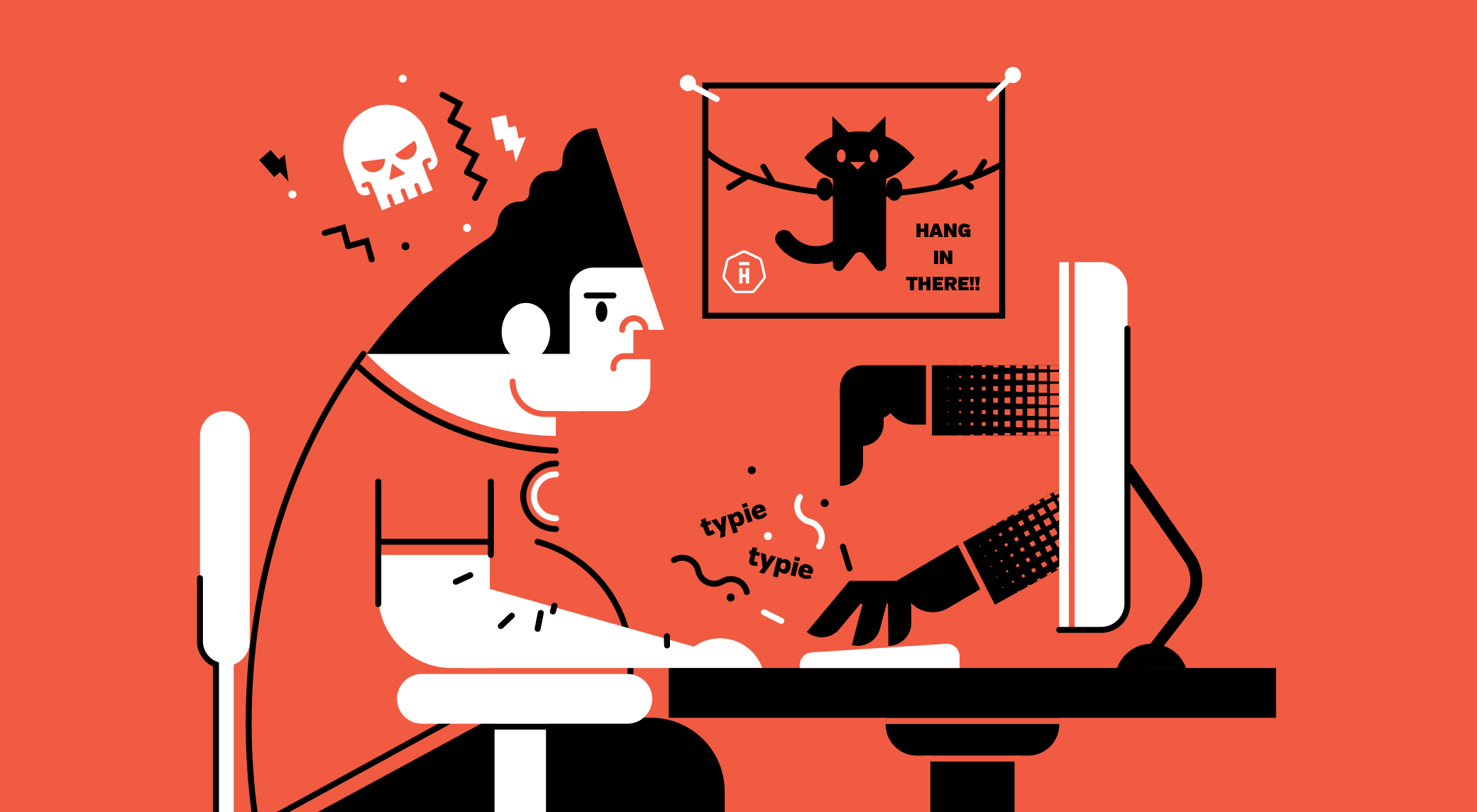Clients are a pain. Demanding, deluded, irrational, ignorant, unreasonable, unrealistic and, above all, convinced of their primary importance in the schedules of your agency. I should know. I am one.
As head of marketing for Hightail and a founder of several startups, I’ve spent most of my career partnering with agencies, filmmakers and designers to create all manner of creative content, from digital display ads to TV commercials. I am acutely aware that there have been times when I’ve ticked the bad client cliché box by insisting on impossible schedules, suddenly changing my mind or giving feedback like, “I don’t know what I want but I’ll know it when I see it”.
Earlier in my career, I worked on the agency side so I appreciate how difficult it can be to manage clients. Yet, over the course of hundreds of projects with dozens of external agencies, I’m often surprised how few manage the client relationship very effectively. After all, dealing with clients is their bread-and-butter so you’d assume that they’d know all the tricks for making them happy.
From a client perspective, I believe there are some simple best practices that any agency can fairly easily do to ensure their engagements are successful. (Aside from consistently producing award-winning, revenue-raising campaigns on-time and under-budget, of course.) So here are my six tips for handling clients like me, shared from experience.
1. Show that you’ve listened to me
There’s nothing worse than feeling your account team isn’t really listening. Too often, they either interrupt in an attempt to complete your every sentence as if they already know what your business is about, or just effusively agree with every statement without questioning anything you say. One effective tactic to counter this came from an account manager who would listen intently and then recap what I said. Not only did it show me that she was listening, but hearing how she interpreted the information often helped me correct or clarify important issues.
2. Get me excited about the direction not the details
Most unsuccessful projects I’ve been involved with failed because the initial creative direction was wrong. When I’m first shown a piece of creative, a common mistake agencies make is to simply ask: “what do you think?”. Such open-ended questions often veer into a discussion on the details of a concept, rather than whether the concept itself is right. Instead, tell me why I should be excited about the direction you’ve taken. Then try and guide my feedback by asking more precise questions like, “does this effectively communicate your brief?” or “will this accomplish the goal of the campaign?” That approach will help ensure the creative direction is on-target and subsequent rounds of feedback will be much more productive.
3. Distinguish between my opinions and my directives
I’ve never seen a design, piece of copy or video that I didn’t have an opinion on. Like anyone, I have knee-jerk reactions to things. But just because I express an opinion doesn’t mean that ‘the client is always right’. In fact, sometimes I want you to tell me why I’m wrong. Ultimately, I hired you for your expertise so it’s OK for you to tell me when I should listen to you. Just remember that sometimes what sounds like my opinion may actually be a specific directive – there may be a particular reason we can’t do something. Ask me if you’re not sure which is which.
4. Find out why I’m making bad decisions
If you find yourself confused by some decisions that seem to actively contradict the creative brief or something I’ve said previously, there may be an underlying reason. There can be all sorts of factors of which an agency may not be aware: budget concerns; the opinion of another exec or board member; a conflict or crossover with other creative initiatives; maybe even something personal. Try digging a little to find out what’s actually going on. You may think that it’s not your problem, but if it’s preventing you from producing great work, you need to find a solution. Even if you find out there’s no reason at all for these bad decisions, that may be a sign to stick to your guns and steer your client back on course.
5. Have regular check-ins
Like you, I’m busy spinning a plethora of project plates, while flitting from one meeting room to the next. But then when I have a few minutes to spare, I’ll think about our campaign and want to know what’s going on – right now. However, that’s never an issue if I know that we have a check-in call on Friday or there’s an update from you in my inbox. Just remember to always provide context. If your client is like me, they are liable to forget much of what was discussed in the previous update so remind them where the project has been, what progress was made and what’s next. Being proactive about updates means never having to react to sudden demands for information.
6. Get final approvers on board early
These days I’m not so involved in the day-to-day development of a campaign. But even though your point of contact is someone on my marketing team, be aware that I’ll probably still sign off on the creative. As a final approver, it puts me in a very difficult position if the expectation is I’ll just rubber stamp something at first sight. At that point, if I don’t like it, it’s a decision between two bad choices: let something I think is sub-par ship or send the team back to the drawing board, scuttling all their effort. Always know who has final approval on a project and ensure they are onboard with the initial idea and keep them apprised at key stages along the way. That will help you avoid approval-related surprises on deadline day.
You see? Clients aren’t so bad after all. We’re actually easy to please if you follow these six tips for keeping us happy. And when you’re the agency that provides such great service as well as successful campaigns, we’ll keep coming back to you with more work.






Terrific information. You’ve given a step up to many things I’ve learned the hard way in the past 7 years. Client Service is EVERYTHING! Thanks for the great article.
Typical client reactions. It’s your job not mine to spell it out, make sure your team understands what you want and communicates it directly to me. Clients refuse to acknowledge they have an equal obligation to avoid a breech of contract. Just because you’re paying the bills doesn’t give you rights that are not in the contract. Don’t pawn off your obligations on me, I’m not being paid for that.
Very well written – great content – I feel like I learned something, thank you!
Very informative, just hope I can get the team on the same wavelength
Thanks, Mike. #2 is crowd pleaser but all are solid ideas.
Really excellent advice. Crikey! I wish I’d known these things when I worked in an ad agency as a bolshy copywriter!!! I think these tips could well be applied to other spheres of business. It’s actually all just common sense.
High marks for content; low marks for punctuation. Thought you’d want to know…
Great tips. I would add to always keep in mind that a client is not an adversary. I’ve worked in more than one shop where the creatives fall in love with their own work then see the client as an obstacle to getting it out into the world. It’s important to check your ego as a project goes on and remember that you and your client are working towards a common goal. Keeping that in mind makes it easier to listen to the client’s needs as projects evolve.
The best advice for anyone who works creatively with clients would be to determine whether or not their potential client is like you as early in the process as possible, and if they make the determination that it looks like trouble, they should avoid getting involved in the project at all costs. There are far too many good, easy-to-work with clients out there to spend this much energy coddling clients like you – it’s simply not worth the effort. And generally speaking clients that need/expect this level of white-glove care and feeding are the slowest to pay once they’ve drained us creatively and emotionally and wasted considerable amounts of our time and energy.
Matt.
Although this was written with an advertising campaign in mind, the advice is actually applicable to other spheres. It may surprise you to know that we meet exactly the same reactions and prejudices in yacht design. Our clients frequently don’t know what they want, they frequently lose the narrative and they frequently change their minds, often for apparently illogical reasons. (When the project is a new yacht, the “Final approver” is generally the spouse). These six tips should be obligatory reading for anyone needing to make a success of a yacht design project too.
Thank you for the valued information.
As a 25 year veteran of the advertising industry, both as a Creative Director/Copywriter, I find Mike’s article refreshingly candid, honest to a fault and very insightful. What on earth could be bad about that? (I really can’t understand why anyone would attack it!) If creatives in agencies constantly see clients as enemies, they set up a mindset from the start that wrecks relationships and destroys good work. If however creatives see clients as mutual comrades who can work together to produce great outstanding work they can both be proud of, the relationship can be long-standing and fruitful for all parties. I am proud to have worked in one agency which had one of the longest client/agency relationships in Australian advertising history and over the course of the relationship produced some outstanding work. Together great clients and great agencies can produce great work. And understanding how clients think and work, and how to work with them better is surely a positive thing, isn’t it. And I guess that’s what Mike had in mind when he wrote the article!!!!